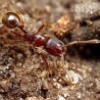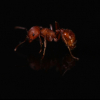Hello everyone,[/size]
I've been spending time putting together an article on Myrmica rubra on my site [/size]Antkeepers – Myrmica rubra. But I've struggled with finding some of the information in all of my ant books and online.[/size]Maybe some of you can help me with the information? Please check out the link above and add here what you think should be in there  What I mainly need information on is how long it takes for an egg to evolve into an ant. And also the lifespan of the workers in the species. Any ideas?[/size]Thanks
What I mainly need information on is how long it takes for an egg to evolve into an ant. And also the lifespan of the workers in the species. Any ideas?[/size]Thanks  [/size]
[/size]
where did you get your information from because some of it seems to be off?
Really? Well I’ll gladly have a look at it if you point out what is wrong (and maybe provide references if you have).
The information is mainly from The Ants, Journey to the Ants and Nationalnyckeln: a popular scientific account produced on contract from the Swedish Parliament by the Swedish Species Information Centre (ArtDatabanken) at the Swedish University of Agricultural Sciences (SLU) in Uppsala.
![]() What I mainly need information on is how long it takes for an egg to evolve into an ant. And also the lifespan of the workers in the species. Any ideas?
What I mainly need information on is how long it takes for an egg to evolve into an ant. And also the lifespan of the workers in the species. Any ideas?![]()















